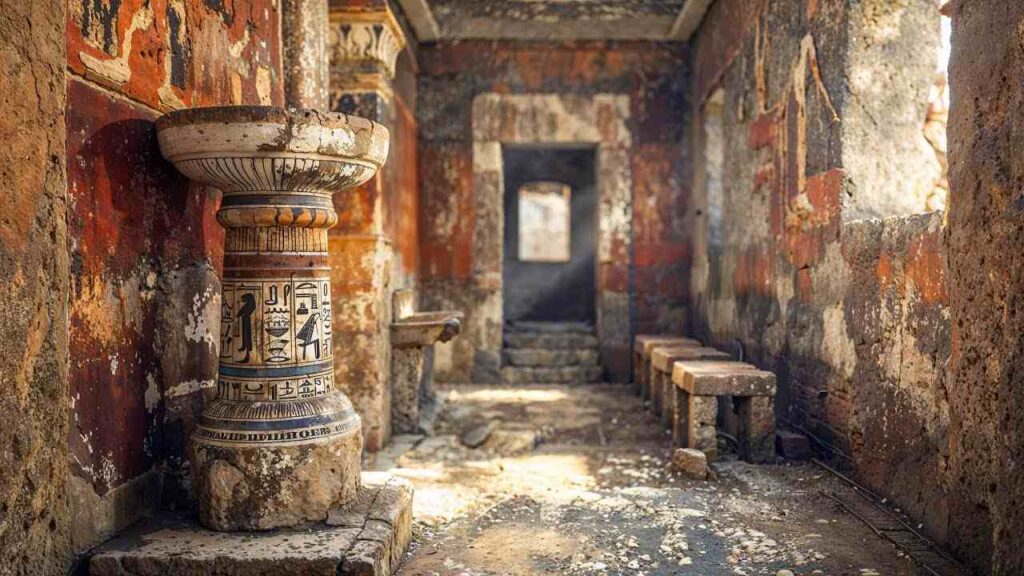Step into a museum, and you’ll find yourself surrounded by stories. Not just in books, but carved into stone, painted on pottery, and woven into textiles. This is the world of ancient artz, a powerful record of human history. Long before written languages were common, people used artz to express their beliefs, fears, and daily lives. These ancient creations are more than just beautiful objects; they are a direct line to the civilizations that shaped our world.
The Sacred Symbols of Egypt
When you think of ancient Egypt, images of pyramids and pharaohs likely come to mind. Their artz was deeply connected to religion and the afterlife. The Egyptians believed that their time on Earth was just one part of an eternal journey. This belief is reflected everywhere in their artz.
Tomb walls are covered in detailed paintings and hieroglyphs, which were not just decoration. They were a functional guide for the deceased, showing them the path through the underworld. The figures are often depicted in a distinctive style—head and legs in profile, but the torso facing forward. This “composite view” was meant to show the body as completely and clearly as possible for the soul’s journey. Hieroglyphs themselves are a perfect blend of language and artz, with each symbol representing a sound, an object, or an idea.
The Ideal Form in Ancient Greece
The ancient Greeks had a very different approach. Their artz celebrated humanity, beauty, and the ideal form. Greek sculptors were masters of their craft, creating statues that feel remarkably lifelike even today. Early sculptures, known as kouroi, were stiff and formal, but they quickly evolved.
By the Classical period, artists were creating figures like the Doryphoros (Spear-Bearer) by Polykleitos. This statue embodies the Greek ideals of balance, harmony, and proportion. Greek sculptures were not just portraits of individuals; they were representations of perfection. They explored mythology, athletics, and the human form with a level of realism and grace that set a new standard for Western artz.
The Soul of the Brush in China
In ancient China, artz took a more fluid and expressive form. Calligraphy, the art of writing, was considered one of the highest forms of artistic expression. It was much more than just putting words on paper. The way a character was drawn—the pressure of the brush, the flow of the ink, the balance of the strokes—was believed to reveal the artist’s inner spirit and character.
Alongside calligraphy, landscape painting flourished. These were not meant to be realistic depictions of a specific place. Instead, artists aimed to capture the essence and energy—the qi—of nature. Mountains, rivers, and trees were painted with dynamic brushstrokes, inviting the viewer to contemplate their place within the vastness of the universe. This focus on expression over exact representation shows a deep connection to philosophy and the natural world.
The Art of the Americas
Across the oceans, the ancient civilizations of the Americas created their own striking and symbolic art forms. The Maya and Aztec cultures are renowned for their intricate stone carvings, vibrant murals, and highly detailed codices.
Mayan art often adorned temples and palaces, depicting rulers, gods, and celestial events in an elaborate and symbolic language. Their ceramics featured finely painted scenes from daily life and mythology, offering insights into their beliefs and rituals. The Aztecs, meanwhile, mastered monumental sculpture. Their impressive stone calendar, known as the Sun Stone, is both a mathematical marvel and a work of visual storytelling. Through their art, both societies communicated stories of creation, power, and spirituality that still inspire awe today.
The Influence of Ancient Indian Art
Ancient India gave rise to an artistic legacy rich in spirituality and symbolism. The subcontinent’s sculptures and temple carvings are particularly celebrated for their detail and expressiveness.
Elaborate stone temples, such as those found in Khajuraho and Ellora, showcase intricate panels full of gods, celestial beings, and scenes from epic tales like the Ramayana and Mahabharata. The craftsmanship is remarkable—figures seem to emerge and dance from the stone, embodying divine qualities and narrative drama. Buddhist art, from grand statues of the Buddha to delicately carved stupas, spread both across India and into neighboring regions, exerting lasting influence. Through these artistic achievements, ancient Indian artists conveyed their society’s deep connections to religion, mythology, and the quest for enlightenment.
The Lasting Legacy of Ancient Artz
The influence of these ancient forms is all around us. The Greek pursuit of ideal beauty can be seen in Renaissance masterpieces and modern advertising. The narrative power of Egyptian hieroglyphs laid the groundwork for graphic design and visual storytelling. The expressive brushwork of Chinese calligraphy resonates in abstract art movements.
Ancient artz teaches us that the need to create and communicate is a fundamental part of being human. It’s a visual conversation that has been going on for thousands of years. By looking closely at these ancient works, we don’t just learn about the past—we gain a deeper understanding of ourselves.
- Exploring Ancient Artz: Beauty & Symbolism
- Ancient artz: art forms that transcend time. Learn about techniques, symbolism, and their influence on modern creativity.
- ancient artz
Related posts:
No related posts.





